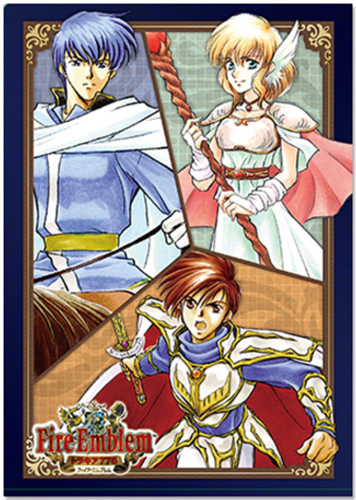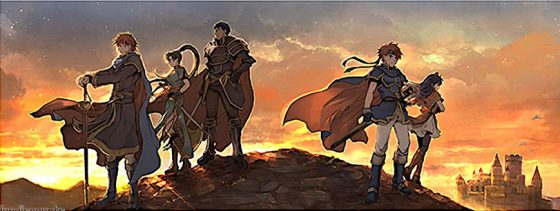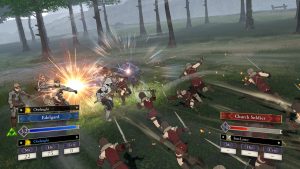
In our last article, we covered Fire Emblem’s meager beginnings as an entirely new genre for the era and its transformation into a major success on the Super Famicom. Everything was falling into place for this newly-forming major franchise for Nintendo. All they needed to do was make sure they got a release ready in time for the Nintendo 64, and Nintendo would finally have their own RPG franchise that could compete on the same level as Final Fantasy and Dragon Quest!
As it turns out, fate can be funny sometimes. Internal issues would end up causing some major setbacks, and Nintendo and Intelligent Systems would need to alter their strategy a bit if they wanted to keep the franchise sustainable. Let’s take a look.
Drama Behind the Scenes
We’d like to point out that Genealogy of the Holy War came out on the Super Famicom in May 1996, which was just one month before the Japanese release of the Nintendo 64. However, the series was no stranger to late releases. The original game was released on the Famicom just a few months before the Super Famicom. Its sequel even came out on the Famicom a full 2 years into the Super Famicom’s life. Series creator Shouzou Kaga however didn’t seem to care all that much. After all, Intelligent Systems was (and still is) technically an independent studio from Nintendo. He had no real stakes in pushing Nintendo’s hardware for them. This is most likely why, when asked if Fire Emblem would make the jump to the Nintendo 64, Kaga’s response was a simple “The Super Famicom should be fine, right?”
Kaga certainly got his wish for another Super Famicom Fire Emblem, as Thracia 776 released in 1999 through a Japan-exclusive service where players could buy rewritable Super Famicom cartridges and download ROMs onto them. The actual official boxed release didn’t even happen until the January of 2000. To put in perspective just how insane this was, the Dreamcast (a console 2 generations removed from the Super Famicom) had been out in Japan for an entire year by the time Thracia 776 released. The Playstation 2 was slated to release in just a few short months. And yet here was Fire Emblem, still stuck on 16-bit technology.
Of course, as it turns out, Kaga did not stick around Intelligent Systems long enough to see the completion of Thracia 776. He actually left to start his own company sometime around 1998. Kaga was simultaneously working on a Fire Emblem for the Nintendo 64 called Ankoku no Miko, and was slated to once again take place in Archanea—the continent the original Famicom game. When Kaga left though, Ankoku no Miko was cancelled and focus shifted to the development of a Game Boy Advance title. Details are pretty scarce as to what happened, but considering that his first new solo project was called Emblem Saga and took place on yet another new continent in the same world of Fire Emblem before Nintendo swiftly filed a lawsuit, it seems likely Kaga felt pressured by Nintendo to stick to Archanea and wanted to keep fleshing out the world instead.
Journey to the West
2002 saw the release of the first post-Kaga Fire Emblem game in The Binding Blade. Smash Bros fans will probably recognize its cover boy, Roy. Director of Smash Bros, Masahiro Sakurai, turned out to be a huge Fire Emblem fan and wanted to help promote the franchise, thought Roy would make an easy addition due to a similar fighting style to Marth and easily distinguishable flame powers, and included him late into development. Nintendo had avoided releasing Fire Emblem for so long overseas because they were afraid RPGs simply weren’t popular in that market, but Marth and Roy were so popular to Western fans that based on this alone, Nintendo decided to finally release its first Fire Emblem game overseas with the pre-sequel to Binding Blade, Blazing Sword (just called Fire Emblem for its international release)!
Or so the legend goes. But the only part of the above that’s true is that Sakurai really loves Fire Emblem and wanted to help promote it. Nintendo was extremely active in pushing RPGs in the West throughout the early-to-mid 90s, publishing Enix’s Dragon Quest series, Quintet’s Illusion of Gaia, and Square’s Secret of Mana themselves along with heavily marketing Final Fantasy. However, strategy games were still a very new concept even in the West (Civilization had only just come out in '91) and with Fire Emblem having more dialogue than your average RPG and rather explicit references to rape and incest, translating the games would have most likely been more of a hassle than they were worth. This is likely why it took the strong sales of Advance Wars to convince Nintendo to finally invest in bringing the series overseas. They’ve stated Advance Wars was a major factor in that decision, at least.
Things did not look bright back home, though. Shouzou Kaga had a very distinctive vision for Fire Emblem and not one that was easily replicated either. He wrote the Fire Emblem games like he was a historian, wanting to chronicle the vast history of a different nation with each new entry. By moving Binding Blade to a completely new world, Fire Emblem lost its grandeur without the world-building it spent 10 years accumulating. Cutting back on gameplay innovations like dialogue trees and terrain options due to limitations with the Game Boy Advance certainly didn’t help with the game’s image either. It looked so quaint in comparison to what came before it. Sales were actually perfectly respectable for Binding Blade (about on par with the Famicom games), but Blazing Sword performed pretty poorly in comparison to past titles, only selling around 265,000 units and outselling only Thracia 776. The last Game Boy Advance title, Sacred Stones, would do even worse than that.
Of course, people in the West had no idea about any of this. They didn’t even know what the heck the franchise was outside of having some blue-haired dude repped in Smash Bros. Blazing Sword and Sacred Stones were perfectly solid Fire Emblem games in their own right, with a fun, straightforward plot and making excellent use of what limited animation they had to make battles pop out of the screen. Plus, it’s not like they had abandoned Kaga’s winning philosophy—light-but-rewarding RPG mechanics mixed with chess-like strategy. People were just happy to have a chance to play. Lyn, Hector, and Eliwood would become just as iconic for Western fans as Marth and Caeda were for Japan. This was actually perfect timing to start releasing the games worldwide, as international sales would help make up some of the difference for lagging sales in the home country. Nintendo never released official numbers for the game, so we know they never broke a million copies sold. However, we have to imagine that international sales must have made up the difference for the shrinking Japanese fanbase, as Nintendo would give the go-ahead for the series’ triumphant return to consoles with Path of Radiance.
Final Thoughts

While Fire Emblem would find new life in its Western fandom, this, unfortunately, would not last for long. The franchise would start to hit even lower points despite quality releases, but that’s a subject for our next article!
Recommended Post
Fire Emblem: Three Houses Review
Recommended Post


